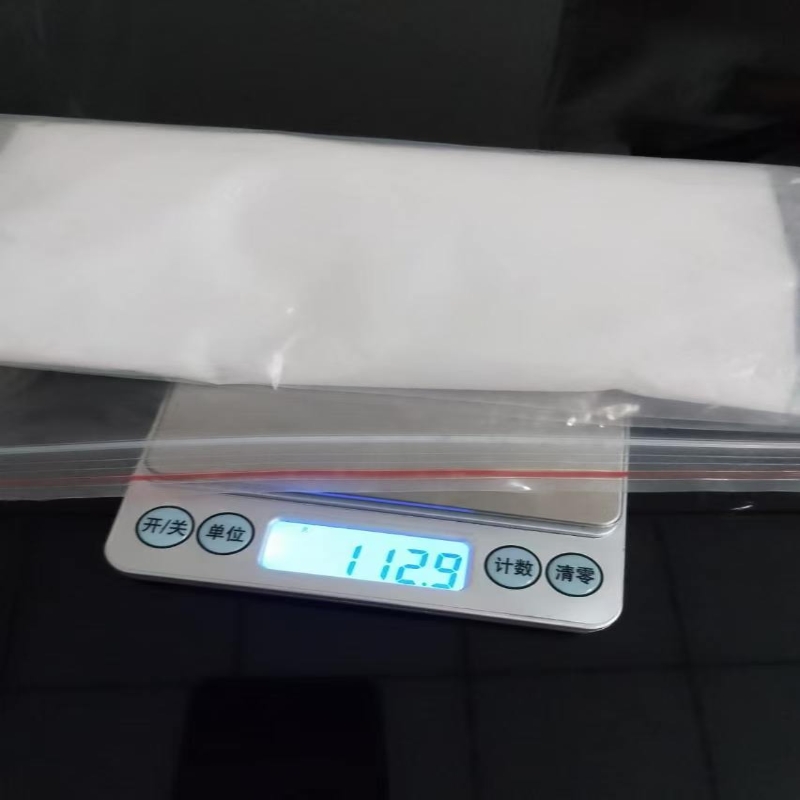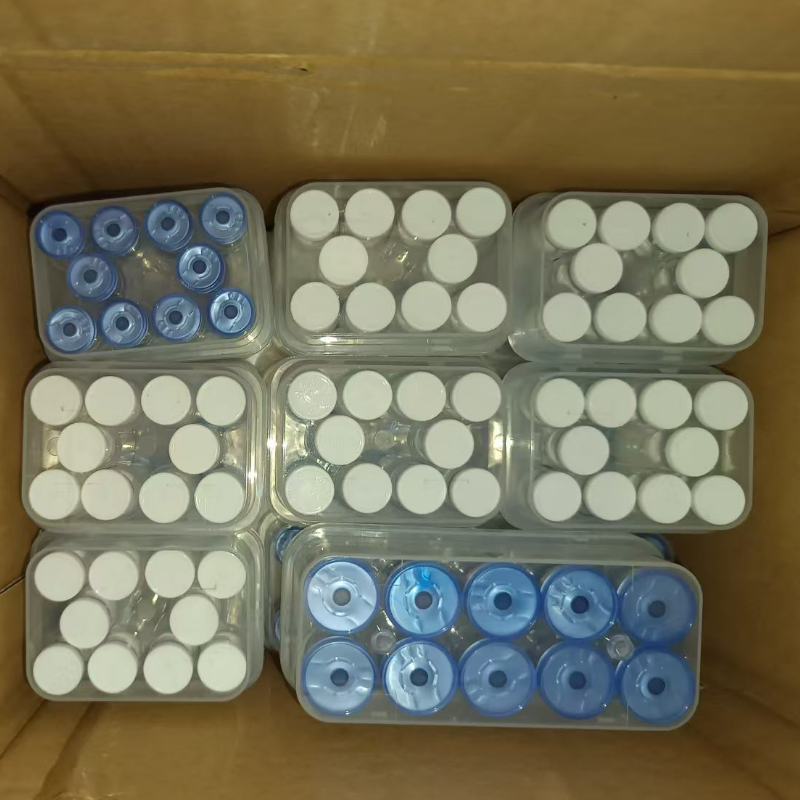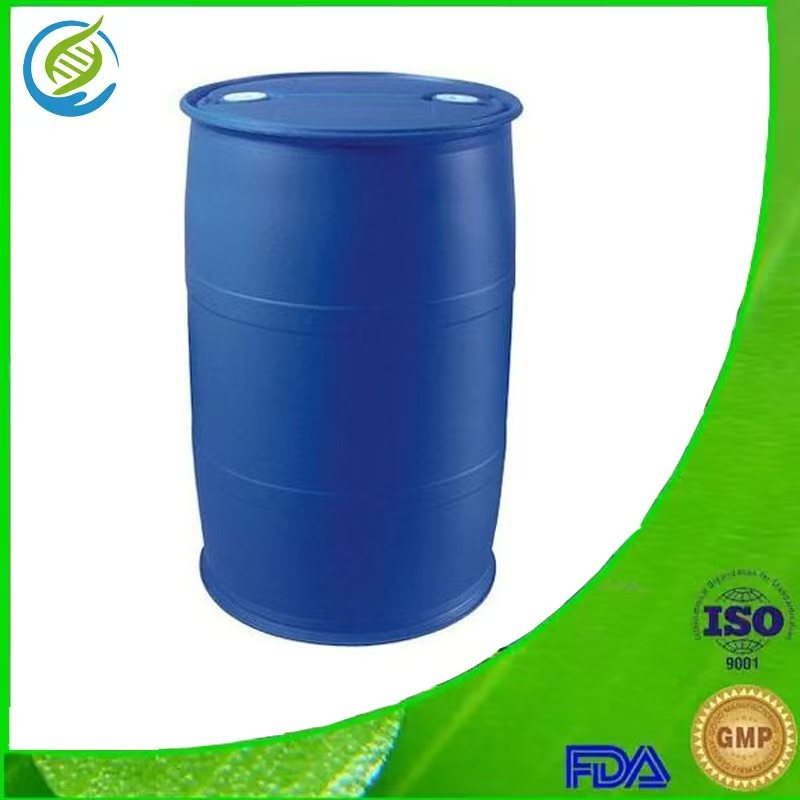-
Categories
-
Pharmaceutical Intermediates
-
Active Pharmaceutical Ingredients
-
Food Additives
- Industrial Coatings
- Agrochemicals
- Dyes and Pigments
- Surfactant
- Flavors and Fragrances
- Chemical Reagents
- Catalyst and Auxiliary
- Natural Products
- Inorganic Chemistry
-
Organic Chemistry
-
Biochemical Engineering
- Analytical Chemistry
-
Cosmetic Ingredient
- Water Treatment Chemical
-
Pharmaceutical Intermediates
Promotion
ECHEMI Mall
Wholesale
Weekly Price
Exhibition
News
-
Trade Service
As medicine moves from a traditional framework to more personalized approaches to cancer treatments, it is necessary to recognize tumor-specific antigens
.
The most famous of these is mesothelin, a glycosylphosphatidylinositol (GPI)-anchored cell surface glycoprotein that is overexpressed
in many cancers.
Mesothelin was first discovered when antibodies that react with the surface of ovarian cancer cells identify new cell surface markers in ovarian cancer
.
Mesothelin has limited expression in normal tissues and is overexpressed in several tumor cells, making mesothelin an ideal target for
tumor-specific therapy.
In preclinical studies using human epidermoid cancer cell lines expressing mesothelin, biodistribution analysis with radiolabeled monoclonal antibody K1 showed good tumor localization and specificity
for antigen-expressing tumors.
To date, several immunotherapy approaches, especially anti-mesothelin antibody conjugates, have been successfully used to treat mesothelin-expressing solid tumors, including ovarian, pancreatic, and malignant mesothelioma, while mesothelin-targeted chimeric antigen receptor (CAR) T cell therapy has also shown significant antitumor effects
.
Targeted therapy and immunotherapy for mesothelin have shown good application prospects
.
Structure and function of mesothelin
The mesothelin gene is located on chromosome 16p13, the mesothelin gene MSLN contains 17 exons, cDNA is about 2138 bp long, contains an open reading frame of 1884 bp, and encodes a precursor protein (69 kDa)
of 628 amino acids.
This precursor protein can be hydrolyzed by furin protease into two fractions: a 40 kDa fragment of mesothelin and a 31 kDa size secreted fragment called megakaryocyte colony-stimulating factor (MPF).
Like many GPI-anchored proteins, mesothelin also sheds, resulting in soluble mesothelin-associated peptides (SMRPs), which are commonly used as markers for detecting malignant mesothelioma
.
Due to the presence of multiple proteases in the extracellular environment, mesothelin can be cleaved at different extracellular sites, and on mesothelin-expressing cells, there are seven major cleavage sites close to the membrane end, resulting in the production of membrane-bound truncated mesothelin
.
GPI-linked proteins are normally involved in cell signaling and adhesion, so mesothelin may play a role in
these biological processes.
The exact role of mesothelin under normal physiological conditions is unknown
.
MSLN knockout mice had normal developmental and reproductive abilities, suggesting that mesothelin function is not necessary for
life.
However, in MSLN knockout mice, the ultrastructure of the mesothelial membrane was affected, suggesting that mesothelin may play a role in
the formation of tumor microenvironments.
Compared with wild-type mice, MSLN knockout mice had significantly less
growth of intra-abdominal cancer cells.
Supplementation with mesothelin or MPF stimulates the growth of MSLN knockout mice to promote lung cancer growth, which supports the role
of mesothelin in tumor cell adhesion, migration, and metastasis.
The role of mesothelin in cancer and signaling
Mesothelin is expressed in many solid tumors, most commonly in mesothelioma, epithelial ovarian cancer, and pancreatic cancer, but also in lung and uterine malignancies and cholangiocarcinoma
.
Mesothelin is most expressed in ovarian cancer and mesothelioma, with higher expression associated
with advanced tumor staging and higher metastasis rates.
In stage IV colorectal cancer, high expression of mesothelin is directly associated
with chemotherapy resistance, aggressiveness, and poor prognosis.
In contrast, data for pancreatic cancer seem to suggest that although mesothelin is expressed, it is not associated
with cancer aggressiveness.
This suggests that the expression of mesothelin and its relationship to prognosis and tumor aggressiveness are tumor-specific
.
The interacting protein of mesothelin is CA125/MUC16, a member of the mucin family and expressed
in ovarian cancer and malignant mesothelioma.
The interaction between CA125/MUC16 and mesothelin mediates atypical cell adhesion in vitro and is therefore considered a potential mechanism for
peritoneal metastasis in ovarian tumors.
The binding of CA125/MUC16 to mesothelin downregulates DKK1 (Dickkopf-1, WNT signaling pathway inhibitor) through the SGK3/FOXO3 signaling pathway, thereby promoting migration
.
Blocking CA125/MUC16 and mesothelin binding restores DKK1 levels and prevents ovarian cancer metastasis
.
Soluble mesothelin binds to surface-anchored mesothelin and triggers the expression of matrix metalloproteinase-7 (MMP-7) via ERK1/2 (extracellular signaling kinase), Akt, and JNK (c-Jun N-terminal kinase) signaling pathways, resulting in enhanced
migration and invasion.
Overexpression of mesothelin in ovarian cancer cells has a similar effect and is significantly associated
with MMP-7 expression.
In addition, the binding of mesothelin to CA125/MUC16 also triggers MMP-7 expression
via the p38 MAPK pathway in pancreatic ductal adenocarcinoma.
In addition, pancreatic cancer cell lines overexpressing mesothelin significantly increased proliferation and accelerated cell cycle progression
compared to mesothelin-silent cell lines.
Overexpression of mesothelin leads to constitutive activation of STAT3, resulting in increased expression of cyclin E, cyclin E/cyclin-dependent kinase 2 (CDK2) complex, and faster G1-S conversion
.
Mesothelin-targeted therapy
Mesothelin is an ideal candidate
for targeted therapy due to its limited expression in normal tissues and overexpression in several malignancies.
The results of several clinical trials of immunotherapy drugs targeting mesothelin have been shown to be safe, including immunotoxin therapy, monoclonal antibodies, vaccines, antibody conjugates, CAR-T cells, CAR-NK cells, and α-targeted therapies
.
Monoclonal antibodies and immunotoxins
SS1P is an anti-mesothelin immunotoxin, an antibody-based bacterial toxin therapy
.
This recombinant protein consists of
mouse Fv fragments linked to the Pseudomonas exotoxin a payload.
Although the toxin is well tolerated and exhibits significant antitumor activity, its efficacy is limited
by neutralizing antibodies.
LMB-100 is a second-generation immunotoxin, including humanized anti-mesothelin Fab fragments and modified Pseudomonas exotoxin a payload, and although it is designed for low immunogenicity, LMB-100 is similarly limited
by antibodies.
In mesothelioma, the combination of LMB100 and anti-PD-1 antibody therapy improves efficacy
compared with treatment alone.
For mesothelin-expressing solid tumors, both approaches still need to be studied
in combination with chemotherapy.
Amatuximab (MORAb-009) is a monoclonal antibody against mesothelin that disrupts cell adhesion and initiates antibody-dependent cytotoxicity
.
Completed phase I and II clinical trials in combination with chemotherapy determined the antitumor efficacy and the maximum tolerated dose
.
Amatuximab treatment increased sensitivity to gemcitabine, reduced the expression of c-Met and AKT in the liver, and reduced the rate of metastasis of
pancreatic cancer cells.
vaccine
GVAX is a granulocyte-macrophage colony-stimulating factor (GM-CSF) tumor cell vaccine that expresses a variety of antigens and induces an anti-tumor immune response through a cross-priming mechanism to recruit antigen-presenting cells, and mesothelin has been identified as one of
the targets of GVAX therapy.
As a result, the mesothelin-expressing Listeria monocytogenes vaccine (CRS-207) was developed, which secretes mesothelin in the cytoplasm of infected antigen-presenting cells, processed and presented by major histocompatibility complexes (MHCs), thereby stimulating the immune response
.
A phase II study using CRS-207 in combination with GVAX and conventional chemotherapy in patients with metastatic pancreatic cancer improved overall survival; However, a follow-up phase IIb study showed that survival rates were similar
to those of chemotherapy.
CRS-207 was well tolerated with few adverse events
.
Antibody-conjugated drugs
Anetumab-ravtansine is an ADC formed by humanized anti-mesothelin antibody coupled to DM4, a maytansinoid tubulin inhibitor, and has shown effective killing effect
on tumor cells expressing mesothelin.
Phase I trials in patients with advanced solid tumors have shown that anetumab-ravtansine can be safely used in patients and support its anti-tumor efficacy
.
Other Phase I and Phase II trials are ongoing
.
Preclinical studies have shown significant improvements
in anti-tumor efficacy when combined with standard chemotherapy in ovarian cancer models.
DMOT4039A is a humanized anti-mesothelin monoclonal antibody ADC conjugated to monomethylauristatin E (MMAE) with antimitotic effects and has shown a favorable safety profile
in phase I clinical trials.
Another ADC, BMS-986148, conjugated to microtubule lysin, disrupts microtubule assembly and induces apoptosis, was evaluated
in solid tumors.
A Phase 1/2a study of BMS-986148 alone or in combination with the PD-1 inhibitor nivolumab concluded that it has a manageable safety profile and clinical activity and requires further clinical trials
in combination with other checkpoint inhibitors.
CAR-T cells
Preclinical studies of mesothelin-targeting CAR-T cells have shown significant tumor reduction
.
Phase I studies have shown that CAR-T cells targeting mesothelin are well tolerated and have little targeted non-tumor effects, but have limited
clinical activity.
There are many ongoing trials investigating CAR-T cells
targeted by mesothelin in solid tumors.
CAR-T cells are usually designed to target a single antigen, however, tandem CAR-T cells targeting two antigens may be more effective and have a higher anti-tumor effect
than CAR-T cells targeting a single antigen.
These tandem CAR-T cells can recognize multiple antigens and have been used in hematologic malignancies, such as multiple myeloma
for both BCMA and CD38.
The tandem CAR-Ts targeting tumor-specific upregulation of mesothelin and folate receptor 1 (FOLR1) simultaneously has IL-12 secretory activity, which has higher invasion and persistence compared with anti-mesothelin CAR-Ts, and the secretion of IL-12 enhances the therapeutic effect of ovarian cancer and reduces tumor antigen escape
.
These data suggest that the effect of
CAR-T cells may be improved by recognizing multiple tumor-associated antigens.
Similar to CAR-T cells, natural killer (NK) cells can also express chimeric antigen receptors and may be more effective
than CAR-T cells.
In a study on ovarian cancer, CAR-NK cells were designed to recognize mesothelin, which is effective
at eliminating mesothelin + cancer cells by increasing cytokine secretion compared to parental NK cell therapy.
In an in vitro study using anti-mesothelin NK cells against gastric cancer, mesothelin NK cells were more selective in killing mesothelin+ tumors and secreting cytokines compared to transduced NK cells, and were able to prolong survival in xenografted mice
.
Bispecific antibodies
Bispecific T cell binders target effector cells (most commonly CD3 on T cells) and the other to tumor antigens
.
These bispecific antibodies direct the cytotoxic effects of T cells to specific tumor cells
.
HPN536 is a trispecific T cell-activated structure used to treat mesothelin-expressing solid tumors
.
In addition to binding to CD3 and mesothelin, HPN536 also binds to serum albumin to increase the plasma half-life of this molecule
.
In vivo studies in cynomolgus monkeys, HPN536 was well tolerated and exhibited mesothelin-dependent pharmacokinetics
.
Currently, HPN536 is undergoing a phase I clinical trial (NCT0387206)
for the treatment of solid tumors.
AbbVie's ABBV-428 is another bispecific antibody designed
for MSLN-dependent CD40 activation.
Due to the powerful immunostimulatory effects of CD40, systemic toxicity may become a challenge
for clinical application in some cases.
Therefore, the vast majority of CD40 agonist antibodies require crosslinking, such as the binding of the antibody Fc domain to the surface FcγR of immune cells, induction of crosslinking and CD40 activation
by tumor antigen binding.
ABBV-428 has been shown to effectively activate CD40 in the presence of tumor antigens, and phase I clinical trials in solid tumors are ongoing
.
Targeted alpha therapy
Targeted alpha therapy (TAT) represents an emerging targeted cancer therapy that uses the high-energy emission of alpha particles to trigger permanent double-strand breaks in DNA, ultimately leading to cell death
.
Targeting thorium-227 conjugates (TTCs) represent a TAT subtype consisting of a covalently linked 3,2-HOPO chelator with specific antibodies to ensure delivery of thorium-227 to mesothelin-expressing cells
.
TTC, BAY 2287411, specific mesothelin in mesothelioma, ovarian cancer, and breast cancer, has shown antitumor efficacy
both in vitro and in vivo in PDX models.
Cellular responses to BAY 2287411 include increased DNA double-strand breaks, oxidative stress, and apoptosis markers
.
The results of this study support BAY 2287411 to conduct a phase I clinical trial to treat ovarian cancer and mesothelioma
.
brief summary
Given the overexpression of mesothelin in tumor cells and its low expression in normal tissues, mesothelin is an ideal target for
tumor-specific immunotherapy.
At present, no drugs targeting mesothelin have been approved for marketing, and a number of drugs targeting mesothelin are in the clinical stage, including ADC, monoclonal antibody, CAR-T, CAR-NK, vaccines, and antibody nuclide drugs, which will bring hope
for the treatment of MSLN-positive tumors.
References:
1.
Mesothelin: An Immunotherapeutic Target beyond Solid Tumors.
Cancers (Basel).
2022 Mar; 14(6): 1550.







